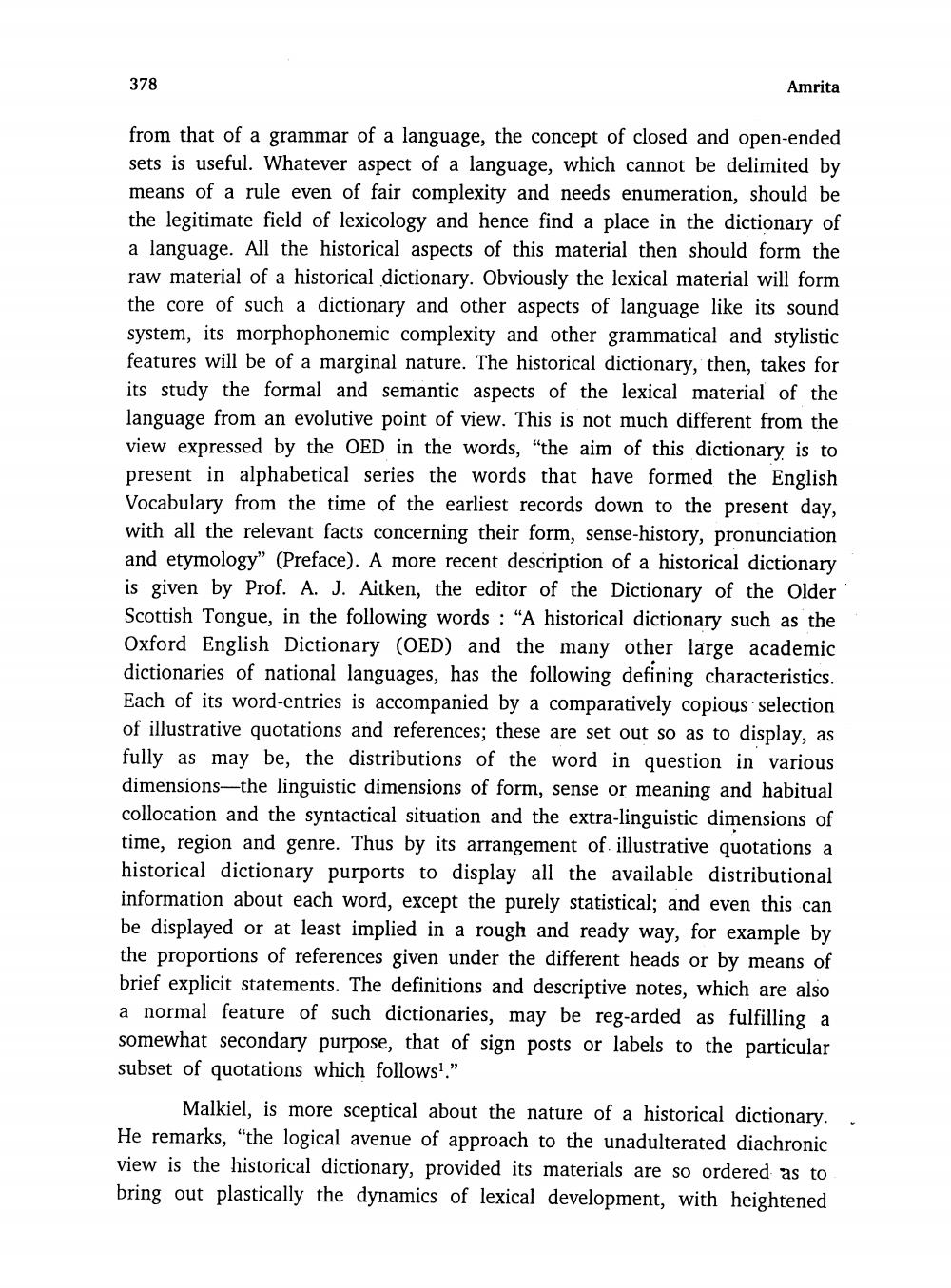________________
378
Amrita
from that of a grammar of a language, the concept of closed and open-ended sets is useful. Whatever aspect of a language, which cannot be delimited by means of a rule even of fair complexity and needs enumeration, should be the legitimate field of lexicology and hence find a place in the dictionary of a language. All the historical aspects of this material then should form the raw material of a historical dictionary. Obviously the lexical material will form the core of such a dictionary and other aspects of language like its sound system, its morphophonemic complexity and other grammatical and stylistic features will be of a marginal nature. The historical dictionary, then, takes for its study the formal and semantic aspects of the lexical material of the language from an evolutive point of view. This is not much different from the view expressed by the OED in the words, "the aim of this dictionary is to present in alphabetical series the words that have formed the English Vocabulary from the time of the earliest records down to the present day, with all the relevant facts concerning their form, sense-history, pronunciation and etymology" (Preface). A more recent description of a historical dictionary is given by Prof. A. J. Aitken, the editor of the Dictionary of the Older Scottish Tongue, in the following words : "A historical dictionary such as the Oxford English Dictionary (OED) and the many other large academic dictionaries of national languages, has the following defining characteristics. Each of its word-entries is accompanied by a comparatively copious selection of illustrative quotations and references; these are set out so as to display, as fully as may be, the distributions of the word in question in various dimensions—the linguistic dimensions of form, sense or meaning and habitual collocation and the syntactical situation and the extra-linguistic dimensions of time, region and genre. Thus by its arrangement of illustrative quotations a historical dictionary purports to display all the available distributional information about each word, except the purely statistical; and even this can be displayed or at least implied in a rough and ready way, for example by the proportions of references given under the different heads or by means of brief explicit statements. The definitions and descriptive notes, which are also a normal feature of such dictionaries, may be reg-arded as fulfilling a somewhat secondary purpose, that of sign posts or labels to the particular subset of quotations which follows!.”
Malkiel, is more sceptical about the nature of a historical dictionary.. He remarks, "the logical avenue of approach to the unadulterated diachronic view is the historical dictionary, provided its materials are so ordered as to bring out plastically the dynamics of lexical development, with heightened




